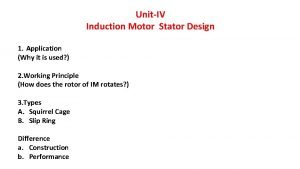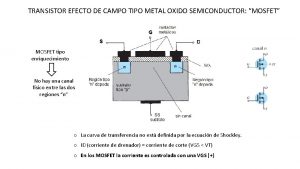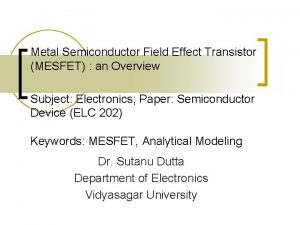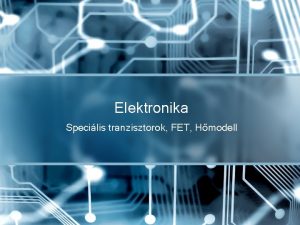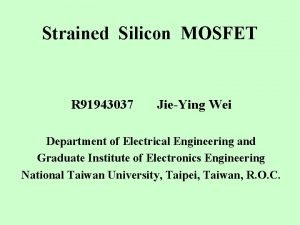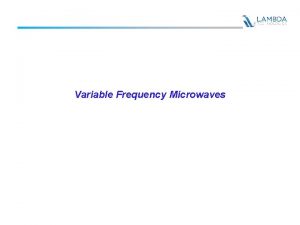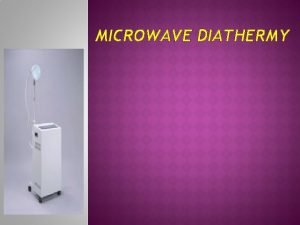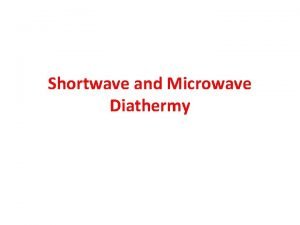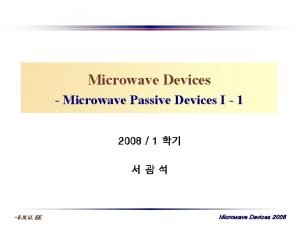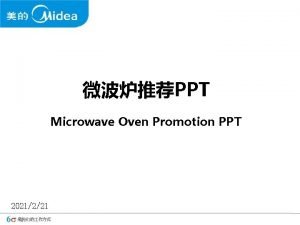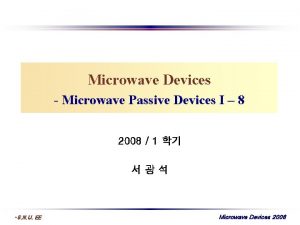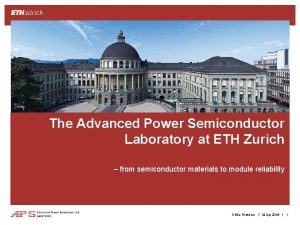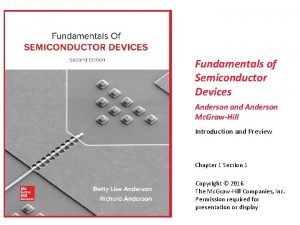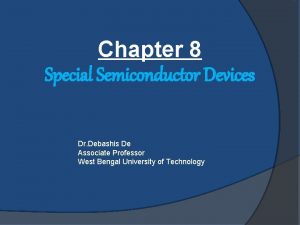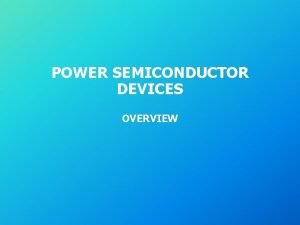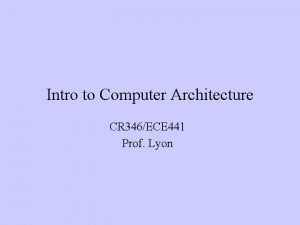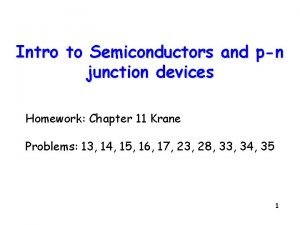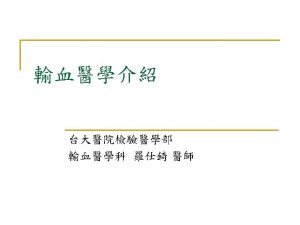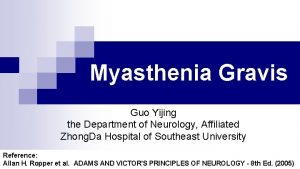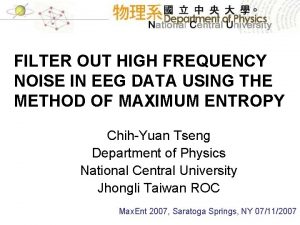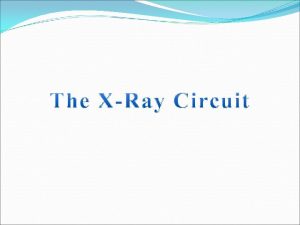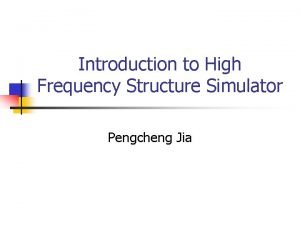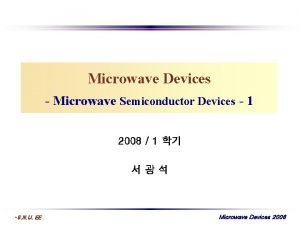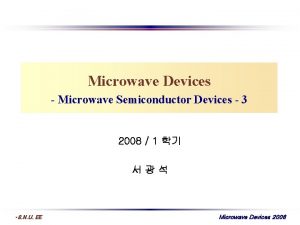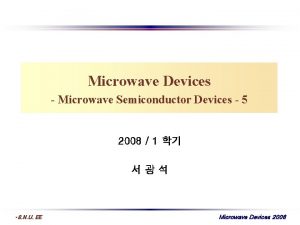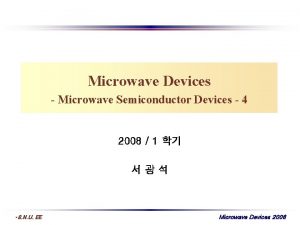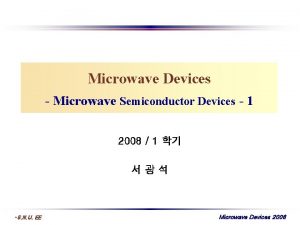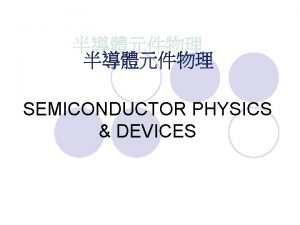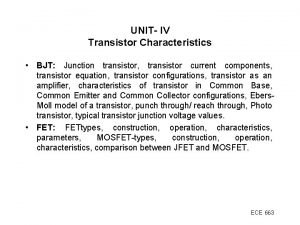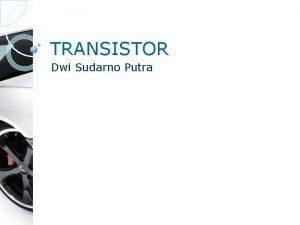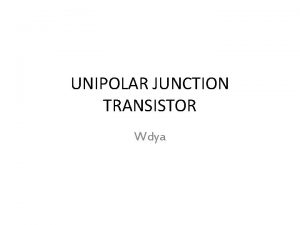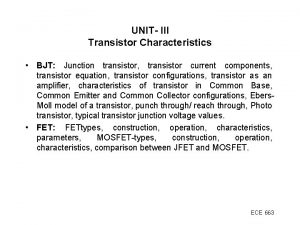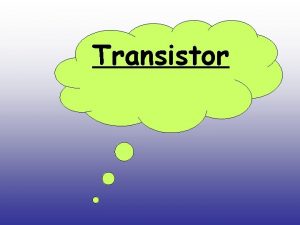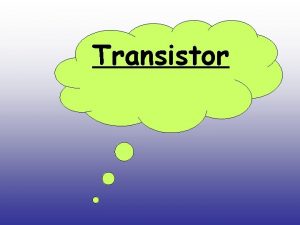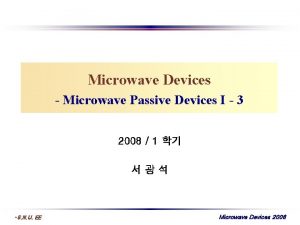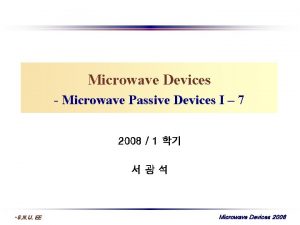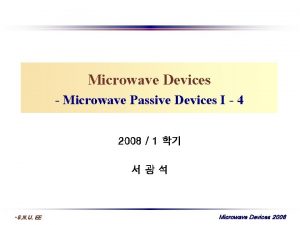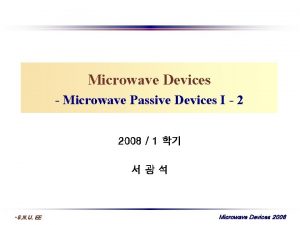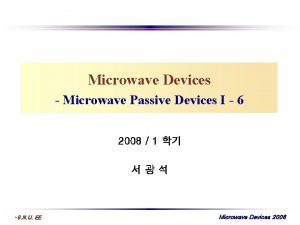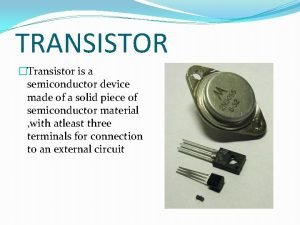UnitIV Microwave semiconductor devices Transistor high frequency limitations

































- Slides: 33

Unit–IV Microwave semiconductor devices

Transistor high frequency limitations • Interelectrode capacitance • Electrode inductances • Transit time

Varactor diode • When reverse bias is applied the width of junction of any diode will change. So the junction capacitance also changes. So if the bias is changed at microwave frequency rate the capacitance changes very fast. So the diode behaves like a variable capacitor even at microwave frequencies.

• Characteristics

• Equivalent circuit

Gunn diode • If a voltage gradient across a thin slice of gallium arsenide can be developed, it can offer negative resistance. Then if the slice is connected to a suitably tuned circuit oscillations can take place. Because the voltage gradient across the slice is very high the velocity of electrons is also high and so the oscillations occur at microwave frequencies.


• Gunn oscillations

• • Application : Low and medium power oscillators Parametric amplifier Police radar CW doppler radar

Tunnel diode • The equivalent circuit of a tunnel diode is shown in figure. At all frequencies the series resistance and inductance have negligible effect on performance. Earlier by applying a small d. c. voltage the diode could be used as an oscillator. But the problem was regarding the stability of generated frequency , as the junction capacitance is quite sensitive to the bias voltage and temperature.

• Diode theory

• Construction :

• Application :

PIN diode • The microwave resistance changes drastically due to applied bias variation , so the device can behave like an electronic switch.

• Working

• • Application Microwave power switch Limiting device Microwave modulator

IMPATT diode • IMPACT AVALANCHE AND TRANSIT TIME diode • Any device that can offer a dynamic negative resistance for dc current can also offer it for alternating current. So if alternating voltage is applied , current will rise when voltage falls and vice versa , at ac rate. Here , negative resistance can be understood as the property of a device that causes 180ᵒ phase difference between the current and voltage. IMPATT diode combines the delay involved in generating avalanche current multiplication with another deliberate delay through a drift space

• Construction : Working :

• Features : • Made of silicon , gallium arsenide or indium phosphide. • Frequency range 4 to 200 GHz • Max. output power 50 m. W • Efficiency 10 -20% • Noisy • Application : in microwave link and CW radar

TRAPATT diode • TRAPPED PLASMA AVALANCHE TRIGGERD TRANSIT diode • Construction :

• • • Features : Operating frequency below 10 GHz Power 600 W Efficiency 30 to 75 % Application : pulsed radar in airborne and marine radar

Parametric amplifier • If the reactance of a tuned circuit is varied electronically in some predetermined way, at some frequency higher than the frequency of signal required to be amplified, the change in reactance results in amplification. Here, the varactor diode is used and capacitance is changed electronically to get the amplification.

• Working :

• UP converter : • If the pump frequency is much higner than Fs, the idler frequency will be much higher than Fs • DOWN converter : • If the pump frequency is slightly higher than input signal frequency the idler frequency will be less than the input signal frequency. • Application : • In satellite communication

HIGH ELECTRON MOBILITY TRANSISTORS (HEMT) • Structure :

• Application : • In very high speed supercomputers, star wars and space communications

STRIPLINE AND MICROSTRIP CIRCUITS • Stripline : • It can be thought as aflattened out coaxial line, having cut away the edges as shown in figure.

• • Advantages : Compact in size Greater bandwidth Compatible with semiconductor microwave devices Disadvantages : Greater losses ‘Q’ factor is lower Low power handling capacity

• Micro strip Circuits : • It is similar to a parallel wire line , consisting the top strip and its image below the ground plane as shown in figure.

• • • Advantages : Construction is simple Easy use for PCB Disadvantages : Low power handling capacity ‘Q’ is low

MASERS • MICROWAVE AMPLIFICATION BY STIMULATED EMISSION OF RADIATION • The RUBY MASER

• Solid state MASER

• • • Application : For radio astronomy Other extra terrestrial communications Radio telescope Receiver for communication with space probes.
 Unitiv
Unitiv Tanggapan frekuensi rendah penguat transistor
Tanggapan frekuensi rendah penguat transistor Transistor de efecto de campo metal-óxido-semiconductor
Transistor de efecto de campo metal-óxido-semiconductor Semiconductor tipo n
Semiconductor tipo n Darlington kapcsolás
Darlington kapcsolás Mobility ratio
Mobility ratio Frequency of a microwave
Frequency of a microwave Indication of microwave diathermy
Indication of microwave diathermy Drum electrode
Drum electrode Passive and active microwave devices
Passive and active microwave devices Microwave oven promotion
Microwave oven promotion Microwave passive devices
Microwave passive devices Power semiconductor devices
Power semiconductor devices Fundamentals of semiconductor devices anderson
Fundamentals of semiconductor devices anderson Special semiconductor devices
Special semiconductor devices Classification of power semiconductor devices
Classification of power semiconductor devices Semiconductor devices
Semiconductor devices Power semiconductor devices lecture notes
Power semiconductor devices lecture notes Semiconductor junction devices
Semiconductor junction devices How to find conditional relative frequencies
How to find conditional relative frequencies Probability with relative frequency
Probability with relative frequency Form factor and crest factor
Form factor and crest factor How is linear frequency related to angular frequency?
How is linear frequency related to angular frequency? Relative frequency bar chart
Relative frequency bar chart What is a marginal frequency
What is a marginal frequency Joint frequency
Joint frequency Similarities of mechanical and electromagnetic waves
Similarities of mechanical and electromagnetic waves H
H Myasthenia gravis clinical presentation
Myasthenia gravis clinical presentation Sh words 3 letters
Sh words 3 letters High frequency filter eeg
High frequency filter eeg Grid controlled x ray tube
Grid controlled x ray tube High frequency structure simulator
High frequency structure simulator Hfr bacteria
Hfr bacteria
